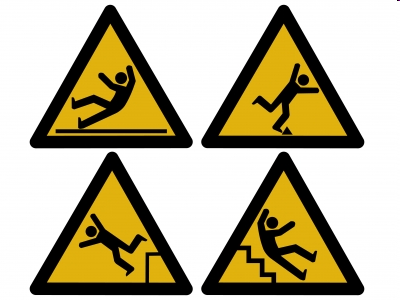Rebar (Download)
Rebar Safety 1 Rebar Rebar, also known as reinforcing bar, is typically composed of carbon steel and is used in concrete and masonry structures for increased structural strength http://www.bennys.bz/images/uploads/rebar.gif 2 History of Rebar The first system was patented in 1878 in the United States that regulated the production of reinforcing steel bars to be used in concrete. The Pacific Coast Borax Company refinery building in California was the first building to be constructed using rebar in 1893 http://www.wsdot.wa.gov/Projects/Viaduct/Photos/ 3 Rebar in the Field Rebar adds strength and flexibility to concrete which helps prevent cracking and breakage Individual bars contain information that comes in ribbing and markings in order to easily identify specifications www.constructionknowledge.net 4 Rebar in the Field Rebar can be used in concrete walls, columns, beams, and footings Rebar is used to strengthen concrete structures www.rebarsupply.net 5 Rebar Safety Concerns Several types of injuries can occur: Trips and falls Impalements Cuts and Abrasions Falling when erecting due to improper tie-offs www.sandiegopersonalinjurylawyersblog.com 6 Rebar Hazards Hazards to consider when working directly with rebar Weight of the rebar Cuts from tie wire Trip hazards Slip/trip hazards created by waste ends cdn2.content.compendiumblog.com 7 Rebar Fatality Cases From 1990 to 2009 there were 51 cases of construction (rebar) fatalities Source: Extracted from OSHA fatality investigation data 1990-2009 8 Example Rebar Fatality Case A worker was on scaffolding at about the fourth floor elevation. Rebar was being stored on the 19 th floor. The rebar became unbundled and a single piece of rebar fell from the 19 th floor vertically. The piece of rebar impaled the employee on the scaffolding entering through his shoulder and continuing through his body killing him Source: Extracted from OSHA fatality investigation data 1990- 2009 http://www.flickr.com/photos/nottlong/1331690117/ 9 Example Rebar Fatality Case A worker was standing at ground level holding the concrete hose assisting another worker. The worker was walking backwards and stepped into a hole, falling approx. 6 feet striking a 2″ x 12″ beam with his left torso and continued falling with his head striking an uncapped piece of rebar. Source: Extracted from OSHA fatality investigation data 1990- 2009 www.osha.gov 10 OSHA Rebar Regulations 1926.701(b): Reinforcing steel. All protruding reinforcing steel, onto and into which employees could fall, shall be guarded to eliminate the hazard of impalement. Source: OSHA Regulations 1926 Source: OSHA Regulations 1926 11 OSHA Rebar Regulations 1926.703 – Reinforcing steel for walls, piers, columns, and similar vertical structures shall be adequately supported to prevent overturning and to prevent collapse. Source: OSHA Regulations 1926 12 Safe Work Practices Always use the correct PPE when working with rebar Hard hat Stee -toed shoes Long pants Harness and tie off lanyard at elevation Gloves Safety glasses Hearing protection www.nmshtd.state.nm.us 13 Safe Work Practices Rebar Plate Caps Plate caps are not abrasion-resistant caps Rebar caps and troughs must be tough enough to withstand a drop of 250lb at 10ft. http://www.heavydutystore.com/allsafe-3011839-pc-110-bar -guard-rebar-cap-pr-22714.html 14 Safe Work Practices Mushroom Caps Mushroom caps do not protect against impalement They are used to protect against abrasion http://www.polylok.com/files/main_images/rebar_cap.jpg 15 S afe Work Practices Trough impalement protection When a force is applied to the trough system, the impact is distributed evenly over the entire length of the lumber Caps are not needed on each individual rebar http:// www.bossteel.com /Safety- RPC.html 16 Think Safety Work Safely 17

